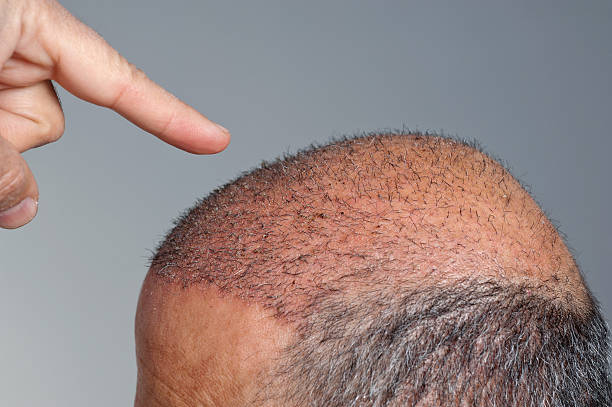Regulatory and safety considerations for topical dermatological interventions
Topical dermatological interventions require coordinated attention to formulation, local physiology, and regulatory frameworks. This overview summarizes key safety topics — from scalp and epidermis interactions to biomarkers and formulation factors — that practitioners, formulators, and regulators consider when evaluating topical products and procedures.

Topical dermatological interventions intersect biology, chemistry, and regulation in ways that affect both skin and hair outcomes. Developers and clinicians must consider the epidermis as the primary barrier, follicle anatomy where many actives concentrate, and the scalp as a distinct microenvironment with sebum production and a unique microbiome. Safety assessments weigh local irritation, systemic exposure, and long-term effects on barrier function and microbiota, while regulatory bodies require evidence of consistent manufacturing, labeling accuracy, and clinical evaluation of risks and benefits.
How does scalp structure influence topical safety?
The scalp differs from other body sites by higher hair density, greater sebum secretion, and frequent cosmetic product use. Sebum affects the distribution and persistence of topical actives, and formulations intended for the scalp must be evaluated for their impact on sebum composition and follicular uptake. In trichology, repeated application can alter the microbiome and local pH, which in turn affects barrier integrity and susceptibility to irritation. Safety testing for scalp products commonly includes assessments for irritation, sensitization, and cumulative effects under conditions mimicking typical consumer use.
What roles do follicle and epidermis play in exposure?
The follicle serves as a reservoir and entry route for many topical molecules, while the epidermis provides a stratified barrier that limits systemic penetration. Formulation strategies that target follicles—using particle size, lipids, or penetration enhancers—must demonstrate controlled delivery without compromising barrier lipids such as ceramides. Safety evaluation typically measures transepidermal water loss, histological changes in the epidermis, and levels of biomarkers that signal barrier disruption. Understanding these interactions helps reduce unintended systemic exposure and chronic barrier impairment.
How do microbiome and pH affect safety and efficacy?
The skin and scalp microbiome influence inflammation, odor, and susceptibility to infection. Topical products can shift microbial balance; therefore regulatory safety dossiers increasingly assess microbiome effects and recovery after treatment. pH is another critical variable: formulations that significantly alter skin pH can impair enzyme function involved in lipid processing and barrier maintenance, affecting hydration and sebum regulation. Safety programs include in vitro and in vivo assessments of microbial composition, functional biomarkers, and pH stability to ensure products do not promote dysbiosis or persistent barrier damage.
How do formulation elements, peptides, and ceramides shape outcomes?
Active choices such as peptides or ceramide-replenishing lipids are selected to target biomarkers of repair, hydration, or inflammation. Peptides may modulate signaling pathways related to collagen or hair growth, while ceramides support barrier lipids and hydration. Regulatory reviewers evaluate the purity, stability, and delivery method of these actives, plus any novel excipients used to enhance penetration. Safety studies focus on potential sensitization from peptide sequences, degradation products, and whether ceramide-containing formulations restore barrier function without altering sebum or microbiome balance.
How are inflammation, hydration, and trichology outcomes monitored?
Clinical and laboratory biomarkers guide safety monitoring: proinflammatory cytokines, transepidermal water loss, corneometry for hydration, and sebumetry for oil levels. In trichology, additional endpoints include follicular inflammation, hair shaft integrity, and counts of hair density or shedding over time. Protocols should specify duration adequate to detect delayed sensitization or chronic inflammation. When topical interventions interact with scalp physiology, longitudinal monitoring of biomarkers and patient-reported outcomes helps distinguish transient irritation from clinically meaningful adverse effects.
What regulatory and biomarker considerations guide approvals?
Regulatory requirements vary by jurisdiction but commonly require demonstration of product quality, safety, and truthful labeling. For topical dermatological interventions, dossiers should include formulation characterization, stability, nonclinical toxicology, microbiological assessments, and clinical safety data relevant to the intended use. Biomarkers can strengthen safety arguments when they reliably indicate barrier restoration, reduced inflammation, or lack of systemic exposure; however, regulators expect validated methods and clinically interpretable endpoints. Post-market surveillance and vigilance reporting are also integral, capturing rare adverse events that pre-approval studies might not detect.
This article is for informational purposes only and should not be considered medical advice. Please consult a qualified healthcare professional for personalized guidance and treatment.
In conclusion, topical dermatological interventions require an integrated approach that accounts for scalp and epidermal biology, microbiome and pH dynamics, targeted formulation strategies involving peptides or ceramides, and rigorous biomarker-driven safety evaluation. Alignment with regulatory expectations and careful monitoring of hydration, inflammation, and follicular responses supports safer, more predictable outcomes for both skin and hair applications.





